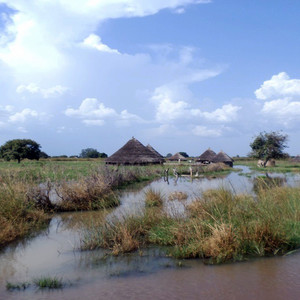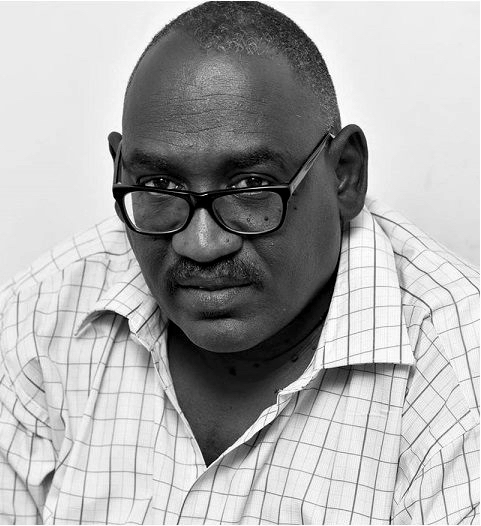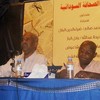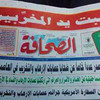“Tourism Contributes to Peace”
Q: Assuming I’m a potential tourist who knows nothing about Sudan - can you give three reasons why I should visit the country?
A: Due to its geographical location, Sudan enjoys several unique touristic sites. First, it has a great abundance of water including the Red Sea, which is one of the purest water resources in the world and is rich with coral reefs and marine life, the Nile River and Atbara River. In addition, Khartoum is located along six river banks.
Sudan enjoys
several unique
touristic sites.”Second, Sudan is well known for its cultural tourism related to its archeological and historical sites which date back to ancient civilisations including Pharaohs, Kush, Kerma, Napatan, Meroitic, Christian and Islamic civilisations.
Third, Sudan is famous for its environmental tourism where wildlife spreads over several regions of Sudan, represented by a group of natural reserves including Dinder at south-east, Radom at south-west, Jebel Al-Dair in North Kordofan and the Red Sea Coast which is rich with coral reefs and sharks.
Deserts also may attract those inclined to adventure, experiencing unspoiled natural landscapes and becoming familiar with the Bedouin communities.
Five top tips for visitors to Sudan
1/Bajraweya or Meroe Pyramids
Located only three hours from Sudan’s capital, the Meroe Pyramids formed the focus of Sudan’s Kush kingdom for several centuries. They are also known as Bajreweya after a nearby village. Nestled in a desert, the majestic pyramids are a top tourist location.
2/Omdurman Market
This bustling market is a ‘must see’ for any visitors seeking local crafts, traditional jewelry and Sudanese delicacies.
3/Whirling Dervishes
At around an hour before sunset every Friday, head to Hamad Al-Neel in Omdurman to witness dervishes performing Sufi ritual dances and drumming.
4/Suakin Island & the Red Sea
Port Sudan, just a few hours away from the capital, is renowned for its excellent diving sites, its virgin coral reefs and beautiful beaches. Some 60 kilometres from Port Sudan lies Suakin Island. Once a trading port for pharaohs, it is now an ancient site, well worth a visit. But beware of the local cats, which are rumoured to be haunted.
5/The confluence of the White and Blue Niles
The While Nile comes from Lake Victoria in Uganda and the Blue Nile flows from Ethiopia. They meet in Khartoum, Sudan’s capital, to form what is called the longest kiss in history”.Q: Does tourism play a role in peacemaking inside the country or with neighbouring ones, especially South Sudan?
A: Tourism inside a unified country enables citizens to become acquainted with aspects of life in their country, thus connecting local communities with one another. Consequently, domestic tourism contributes to building sustainable peace, mitigating conflicts and resolving internal conflicts by mutual consent.
It is worth mentioning that the educational system during the 1960s and 1970s introduced students to all Sudanese sites through school visits and often helped avoiding conflicts among Sudanese people except for, of course, the southern province, which suffered clashes for a long period of time.
Regarding South Sudan, I believe the safest way to alleviate the conflict is achieved through exchanging tourist groups between both countries and coordinating their tourism activity with other countries. Economic benefit is great for both countries as they complement each other.
Q: Is there any current coordination between both countries in this field?
A: Before the separation, the Ministry of Tourism and Antiquities employed a group of people from Southern Sudan and trained them to work in the field of tourism and related activities to be the future staff responsible for activating tourism in Southern Sudan under one unified country, but secession was inevitable.
After the separation, we were aware of the importance of activating coordination between both countries, but conflicts and clashes obstructed the process. However, we were thrilled with the participation of the South Sudanese tourism representatives at the Berlin International Tourism Exhibition held in March 2013 and we discussed with them the need to establish more interaction between both countries at the tourism level.
Q: How does the Ministry of Tourism benefit from the Nubian civilisation, which attracts numerous tourists?
A: The Ministry of Tourism, in cooperation with specialised bodies in the concerned states (Nile Valley and Northern states) as well as international institutions working in the field of archeology and museums and through Sudan’s project for protecting and rehabilitating archaeological sites, is seeking to implement an ambitious plan to transform these attractive touristic sites into an integrated touristic program. The hope is that such tourist accommodation and services would greatly increase cultural tourism in Sudan.
Q: Do you have plans to consider tourism as a key supporter to the government’s overall budget?
We plan to make tourism a major contributor to the state’s budget.”A: Yes, we plan to make tourism a major contributor to the state’s budget through employing and rehabilitating staff working in the field of tourism, developing infrastructure and services at touristic sites and educating people on the social as well as economic importance of tourism.
Q: How would the Ministry include ordinary citizens in its tourism plan?
A: Most touristic sites are located in rural areas far from urban ones. In other words, it is directly linked to local communities. The Ministry seeks to connect these communities to touristic sites through a number of steps, the most prominent of which are involving local communities in administrating touristic sites, giving them advantages in jobs related to their handcraft skills and educational as well as practical capabilities, selling their agricultural and livestock products at touristic villages and hotels at affordable prices and finally creating community based tourism to benefit from folk art and handmade products in serving tourists.






